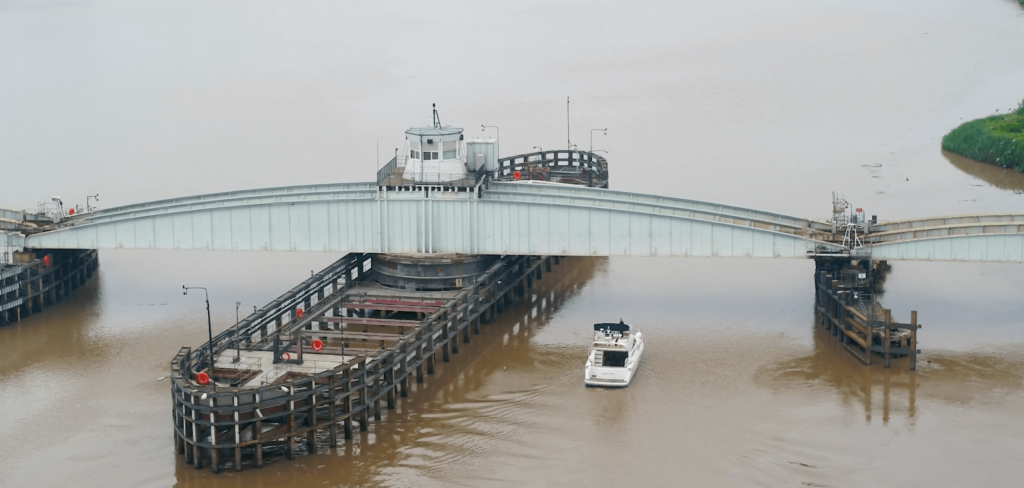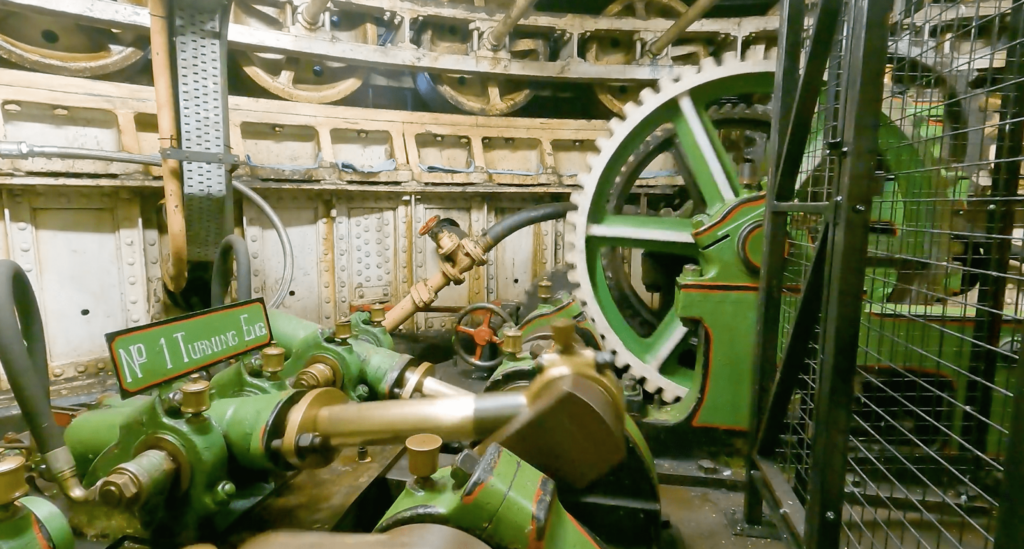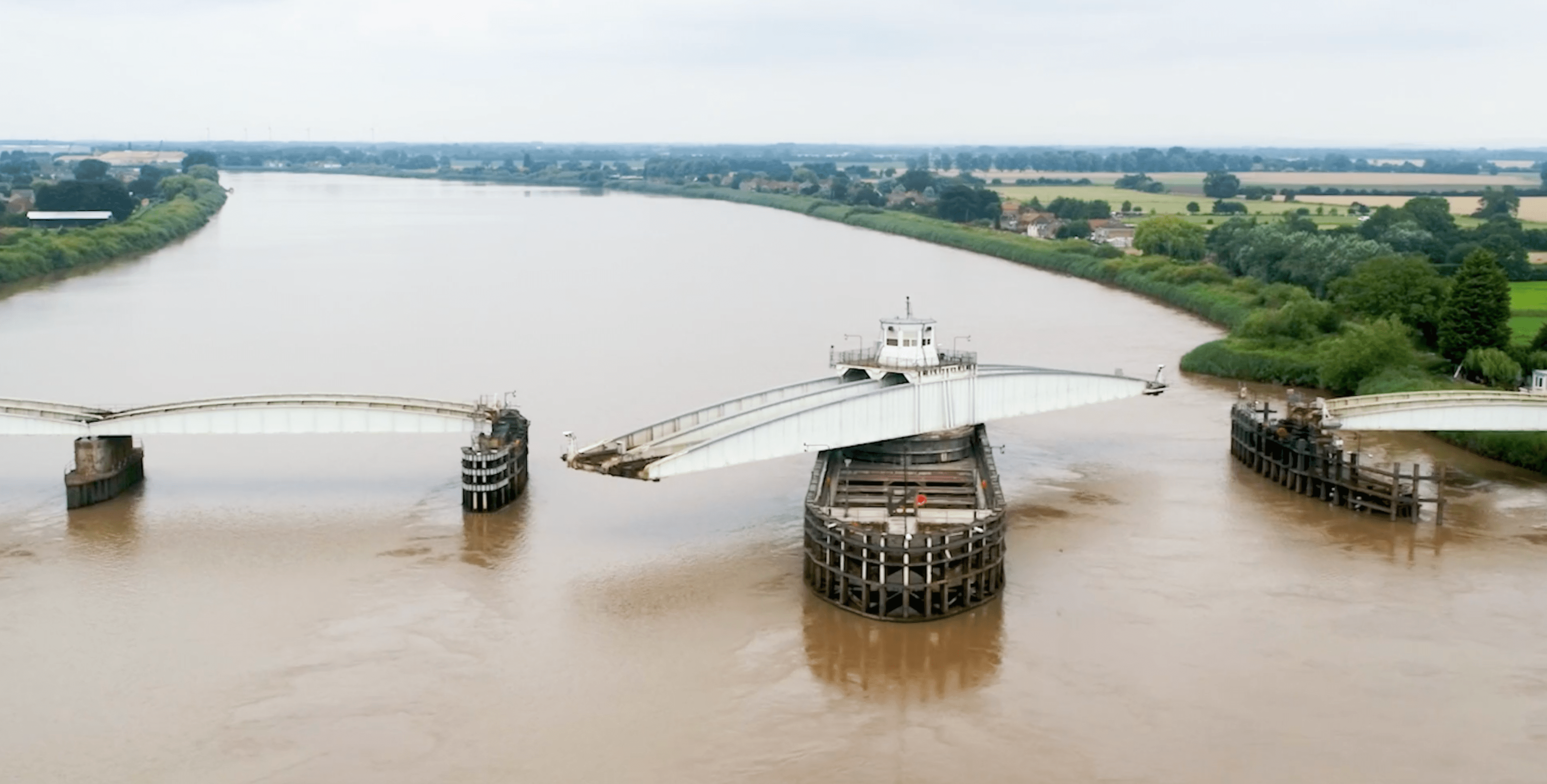Historic engineering doesn’t get much more impressive than Goole Swing Bridge.
This more than 150 year-old work of art is considered one of the finest swing bridges in Britain.
It was Grade II* listed 35 years ago and still works hard each day to keep you, freight operators – and even boats – moving.
Watch the incredible Goole Swing Bridge in our new film.
What’s a swing bridge?
Simply, a movable bridge over water that swings open to allow boat and ship traffic to travel safely beneath.
Goole Swing Bridge over the River Ouse, near Goole, Yorkshire, “is probably the finest example of its kind in the British Isles,” according to Civil Engineering Heritage: Northern England, edited by Robert William Rennison.

Scott Robson, team leader, Infrastructure Maintenance at Network Rail, said: “You could say this is a bridge that requires swinging for vessels and the passage of trains. But it’s so much more than that.”
John Page, a records controller at our archive, said: “One of the finest examples of swing bridges ever built.”
The bridge opened in 1869 for the Hull and Doncaster Branch of the North Eastern Railway, according to Grace’s Guide.

It’s also known as the Skelton Viaduct and Hook Bridge, and was designed by Thomas Elliot Harrison, a civil engineer and lifelong friend of the renowned railway engineer Robert Stephenson.
The pair had collaborated on the design famous High Level Bridge in Newcastle, which completed in 1849 and was the world’s first bridge to combine rail and road traffic. However, it’s Stephenson who is most commonly credited with its design.
Video – Horse-drawn to High Speed
Legacy engineering
Goole Swing Bridge was borne out of the need to connect the South Yorkshire coalfields and the port of Hull. In the 1860s, the North Eastern Railway put forward its plans for the Hull and Doncaster branch.
The River Ouse was a highly navigable channel with lots of big ships using it so a normal bridge wasn’t an option.
Civil Engineering Heritage: Northern England said: “When opened in 1869 it was said to be the second largest railway swing bridge in the world.
“It has six sets of three hogback wrought iron plate girders supported on cast iron cylinder piers up to 90-feet in depth to their foundations.
“There are five fixed spans of 116 feet, one at the east end and four at the west end. The swing span has girders 251 feet long by 16 feet deep and weighs 650 tonnes.
“It turns on 36 rollers, three feet in diameter, on a 30-feet diameter race enclosed in a 50-feet diameter pier, not unlike a naval gun turret, and is supported on a cluster of seven cylinders. It provides two 100-feet openings for navigation.”
Grace’s Guide said: “In order to know where to stop the bridge when swinging, the bridge man was provided with an indicator resembling a clock, having two hands for ‘coarse’ and ‘fine’ position indication. When in the correct position, a spring-loaded bolt locked the swing section to the fixed girders. It was released from the control cabin by a system of levers and cables.”
More than special
It’s been Grade II* listed since 1987, meaning it’s of more than special interest. Just 5.8% of listed buildings are Grade II*.
We have a responsibility to maintain and safely operate Goole Swing Bridge, while respecting its heritage status.
Scott said: “It’s finding that balancing act between keeping the railway running, keeping the heritage side of things correct and I think that’s what the impending upgrades will address.”
The signal cabin on the top of the bridge is almost all original, making it one of the oldest signal cabins on our railway. We’re upgrading the signalling to keep it up to modern standards.
John said: “Although it’s a heritage structure, it’s more than 150 years old, it’s still doing its job today and that’s down to the care and maintenance we give to the bridge. It kind of really demonstrates to others how we care and what we value about our network.”
Read more:
The Architecture the Railways Built – Curzon Street
Our historic railway – seven discoveries
The Architecture the Railways Built – Spa Road station
From the archive: stunning historic railway plans revealed
Film: discover the Network Rail archive
From the archive: our oldest items
Incredible Stephenson railway history rediscovered
Read the George Stephenson notebook online
Step back in time… and inside Britain’s busiest signal box
The Architecture the Railways Built – Bramhope Tunnel
The Architecture the Railways Built – Newcastle
The Architecture the Railways Built – interview with presenter Tim Dunn




